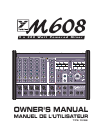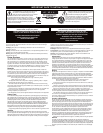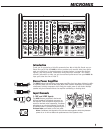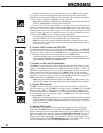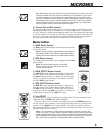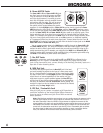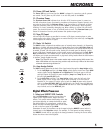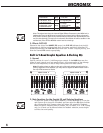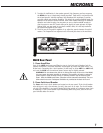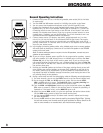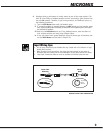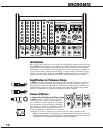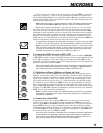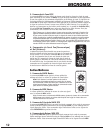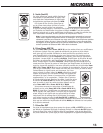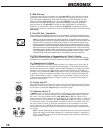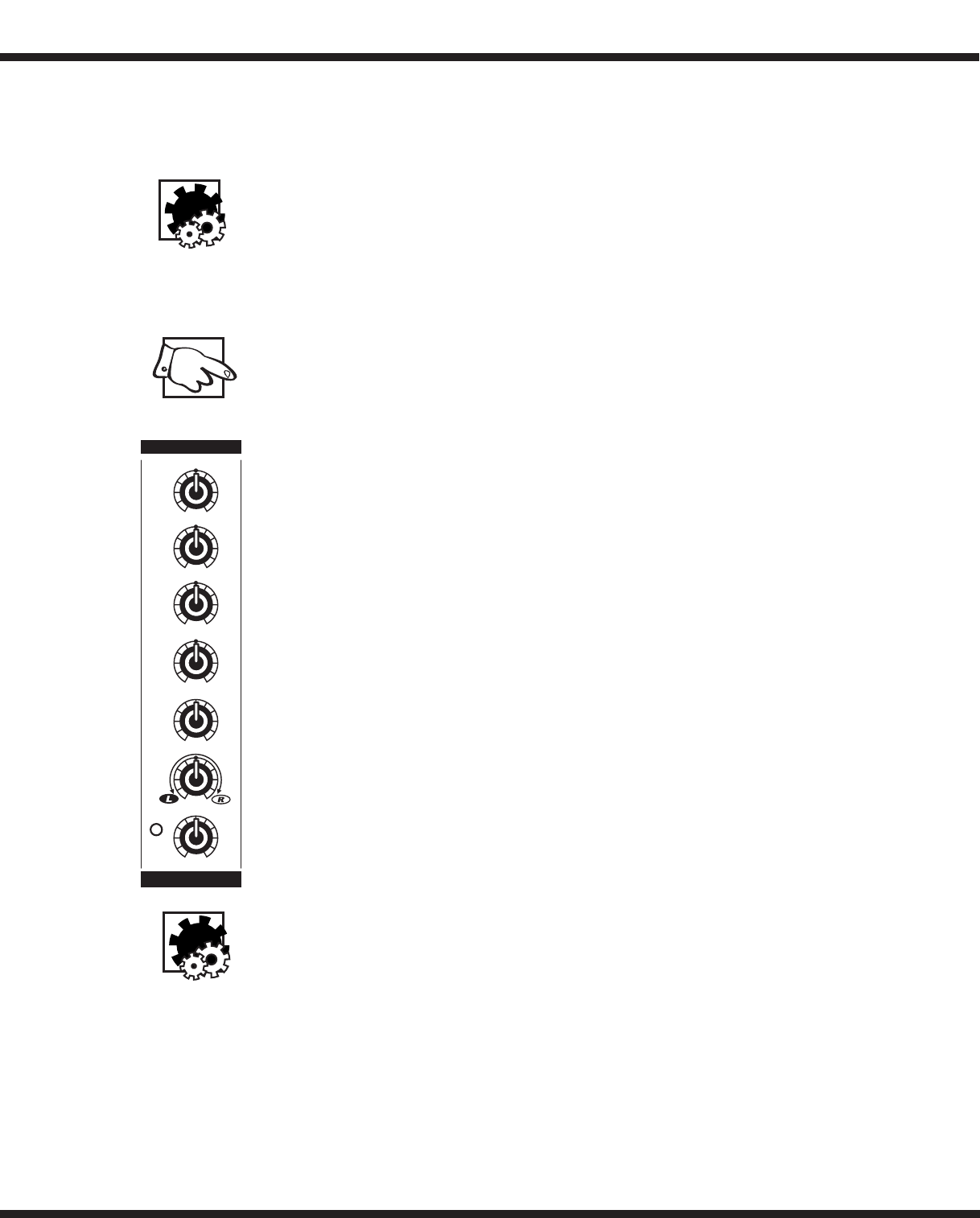
2
MICROMI
X
In addition to the XLR inputs, each channel features ¼-inch LINE in jacks. Channels
1-2, 5/6 and 7/8 are balanced line-level inputs and will accept either balanced (Tip/
Ring/Sleeve) or unbalanced (Tip/Sleeve) input cables from high impedance microphones,
mixer line outputs, keyboards, synthesizers, electric pianos etc.
Note: When connecting a balanced signal, use balanced patch cables with either an
XLR or a Tip/Ring/Sleeve ¼-inch plug on the mixer end.
Channels 3 and 4 have very high impedance, unbalanced ¼-inch inputs which are opti-
mized for instruments such as electric basses, acoustic electric guitars etc. Stereo chan-
nels 5/6 and 7/8 have left and right ¼-inch balanced LINE in jacks as well as mono gold-
plated XLR low impedance microphone inputs. The ¼-inch inputs may be used to connect
a stereo CD player, tape deck or an additional mixer etc. A phono pre-amplifier must be
connected to the M608 inputs for optimum turntable performance.
Connecting signals to both types of inputs on any one channel (MIC and LINE in) is
not recommended. To do so may change the gain of the input circuit.
Note: You may connect a stereo source to channels 1 through 6 but you must
use two channels, one for left and one for right and Pan appropriately or sum to
mono using a ‘Y’ cable.
2. Channel LEVEL Controls and CLIP LEDs
This adjustment determines the signal level sent to the MAIN mixing bus. The CLIP LED
will illuminate when the channel’s overall signal level is 3 dB below the onset of actual
clipping. As a result, small amounts of clip LED activity are acceptable, however frequent
or continuous activity indicates the need to turn down the LEVEL control.
In audio terminology, a bus is a mix-down channel where all the signals from the
input channels are blended into one signal. The M608 has 5 busses: MAIN (left and
right), MONITOR, EFFECTS and RECORD OUT.
3. Channel Lo, Mid, and Hi Equalization
The M608 tone controls adjust the bass, middle and treble frequencies for each channel
independently. Center frequencies have been carefully selected to help achieve the best
quality of sound. Bass is centered on 40 Hz, Mid at 700 Hz and the Hi is at 12 kHz. The
adjustment range for each control is +/- 15 dB. These parameters provide versatile equal-
ization consistent with the clean simplicity of the M608’s design. As with equalizers,
boosting one or more frequencies increase the channel’s level. If the channel is already at
a high level, clipping may occur, in which case the clip LED will illuminate. Reduce the
LEVEL setting and/or the Equalizer if clip activity is excessive.
Note: The center position reflects a neutral or flat EQ control setting; however, turn-
ing down EQ settings can be used effectively to reduce feedback and/or distortion).
4. Channel MON Controls
The MON control (monitor send) on each channel varies the amount of signal being
sent to the monitor bus in the M608. In the mono channels the MON signal is pre-LEV-
EL control and pre-EQ. It is taken before the LEVEL control so the monitor signal can
be mixed independently of the MAIN mix. As a result, channel EQ and LEVEL settings
do not affect the sound of the monitor signals. The MON signal in the stereo channels
is also pre-LEVEL and pre-EQ.
Note: With an independent monitor mix, it may be beneficial to connect a graphic
equalizer between the MON output and the monitor amplifier (Power AMP IN B,
external amplifier or powered speakers, depending on how you have it set up) to
help control feedback.
5. Channel EFX Controls
The EFX control (effects send) for each channel adjusts the level of the channel signal
being sent to the M608 effects bus. This signal is post-LEVEL control and post-EQ, the
sound is affected by both the channel EQ controls and the channel LEVEL control. The sig-
nal from the effects bus is internally routed to the Digital Effects Processor. The channel
EFX control regulates the intensity of the built-in digital effects for the channel’s output.
When using the built-in digital effects, you can connect a standard on/off footswitch (e.g.
Yorkville model AFS1) to the EFX Out/Footswitch jack to turn the internal effects on or off.
For more information see the section EFX Out/Footswitch in this manual.
0
5
28
7
6
4
3
91
10
0
10
-15 +15
dB
-15 +15
dB
-15 +15
dB
0
5
28
7
6
4
3
91
10
Pan
Mon
EFX
GAIN
Lo
Mid
Hi
1
clip



